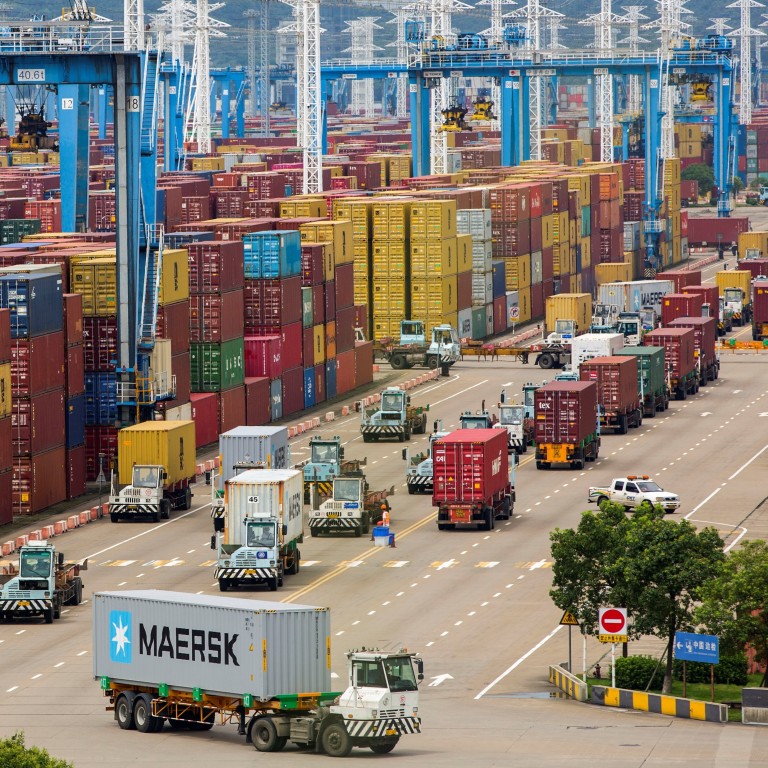
China shipping: container disruptions inevitable at Ningbo-Zhoushan Port, but impact may be ‘marginal’
- Congestion and wait times have continued to build, albeit slowly, since terminal’s closure following worker’s positive coronavirus test last week
- But valuable lessons may have been learned from the massive disruptions at China’s Yantian Port earlier this year, industry insider says
As rumours swirl about a possible reopening time frame for a key terminal at the world’s largest port by cargo tonnage, analysts and industry insiders say any problems in the global supply chain could be milder than those seen earlier this year at China’s Yantian Port in Shenzhen.
“If the port returns to full capacity before the end of August, we should be OK with only marginal delays and impacts,” said Akhil Nair, vice-president of global carrier management and ocean strategy at Seko Logistics.
Ningbo-Zhoushan Port said on Wednesday that it was preparing to restart operations at the Meishan terminal, without giving additional information. And on Thursday, an employee at the terminal who answered the Post’s call said there was no firm date for resuming service.
I guess [Ningbo-Zhoushan Port authorities] learned valuable lessons from Yantian on how to manage this
Nearly all inbound and outbound container operations at Meishan have been redirected to other terminals since its closure, according to a report by shipping and logistics service platform Project44.
Nair said one good sign at Ningbo was that there are not yet long lines of trucks waiting outside other terminals.
While carriers are being diverted to other terminals, blank sailings to the Ningbo-Zhoushan Port have not dramatically increased as they did following the Yantian Port’s closure, as only 15 blank sailings were recorded on Tuesday, which was in line with normal levels, according to Project44. A blank sailing occurs when a ship does not call at a scheduled stop.
But congestion and wait times have continued to build slowly at the Ningbo-Zhoushan Port and nearby Shanghai Port since the Meishan closure, with the average wait time increasing from two or three days to closer to five days, Nair said.
Meishan terminal handles around 20 per cent of total cargo throughput at the Ningbo-Zhoushan Port in normal times.
On Tuesday, all other terminals at the Ningbo-Zhoushan Port handled a container throughput of 93,000 20-foot equivalent units – the standard measure for freight container volume, known as TEU – exceeding the average single-day throughput in July, according to the latest official data. Before that, the average daily throughput since the closure was around 90 per cent of the July level.
Lars Jensen, CEO of liner consultancy Vespucci Maritime, said the reduced throughput over the period may have led to a total operational backlog of around 70,000 TEU.
So far, all other employees in and around the Meishan terminal have undergone three rounds of Covid-19 testing, and all have returned negative results, according to a statement by the state-owned Ningbo-Zhoushan Port Company on Wednesday.
In the run-up to the holiday shopping season – which traditionally begins in late November with Black Friday sales and goes through Christmas – the terminal’s closure during a peak shipping season has stoked fears of additional supply-chain disruptions.
The United States would be the nation most affected by such disruptions, as the Port of Long Beach tops the lists of ports that are exported from Ningbo, and clothing, office equipment and integrated circuit boards head the list of affected commodities, according to a report by Russell Group, a British risk-modelling company.
“Cars and clothes are the goods that will be most affected by the Ningbo disruption, which is bad news for the auto and retail sectors as well as the consumers they serve,” said Suki Basi, managing director at Russell Group.

